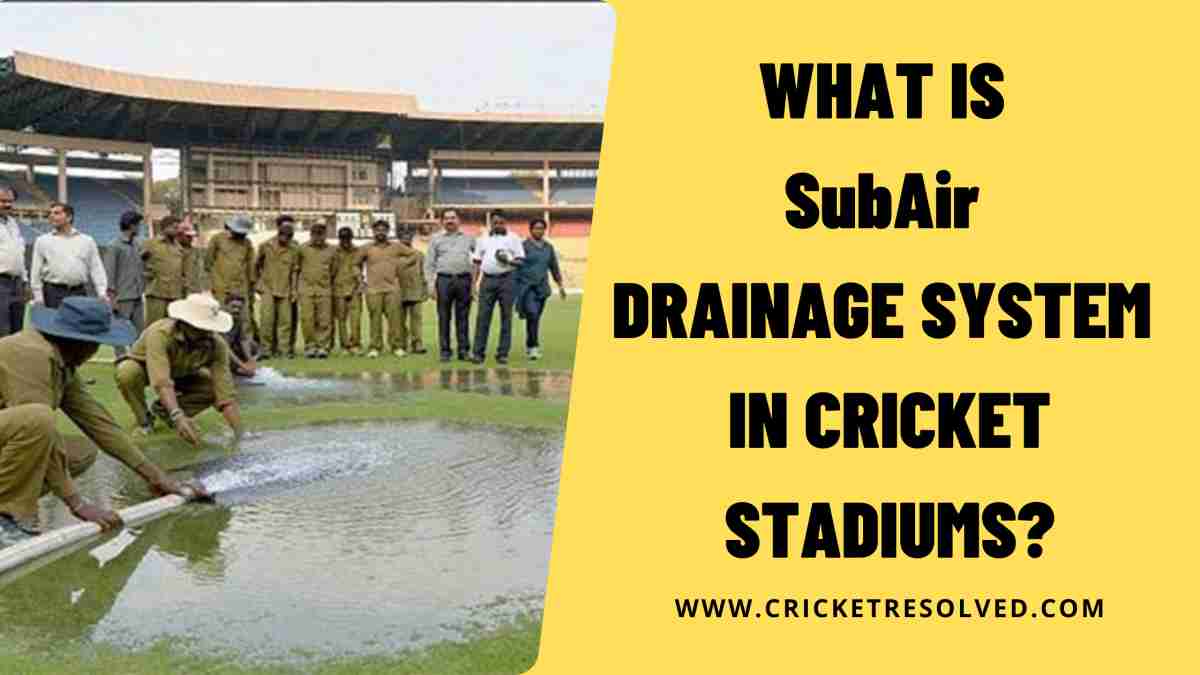
Cricket matches getting interrupted due to rain is not a new thing. And cricket is perhaps one of the few sports that often has to be stopped when it pours down.
The rain comes, the game stops, and the long wait for the water to clear from the outfield starts. This can be frustrating not just for the players but also for the fans.
But now some cricket stadiums have a system that helps clear the water in less time.
What system, you ask?
It’s the SubAir Drainage System.
In this article, let’s get to know the SubAir Drainage System and how it works.
So what is the SubAir Drainage System after all?
It is a state-of-the-art drainage system aimed at clearing water from the outfield. The US-based SubAir company has developed the subsurface aeration and vacuum-powered drainage system.
The SubAir system helps clear water in a quick time and restart the match in a short turnaround. This reduces the chances of a match getting called off or prevents the game from getting delayed due to a wet outfield.
Apart from cricket stadiums, you can find the SubAir system used in golf courses, football, baseball, and rugby stadiums across the world.
How does the SubAir Drainage System work?
The SubAir system uses a network of pipes with holes for aeration and drainage. This network of perforated pipes is installed under the surface of the outfield in a closed-loop manner, along with remote sensors.
This network is then connected to the SubAir Sport System, which comes into play as soon as it starts raining on the ground.
When the system detects rain through the remote sensors, it swings in action and starts sucking out water 36 times faster than natural drainage conditions. The network of perforated pipes drains out water from the outfield at an astounding rate of 10,000 litres a minute.
This results in clearing out the outfield without the buildup of water puddles on the surface.
Also Read | 8 Instances when Cricket Matches were Stopped for Unusual Reasons
What are the benefits of the SubAir Drainage System?
The SubAir System has many benefits. The first of which is it helps resume games in less time, reducing delays and cancellations.
Second, the system helps ground curators maintain a healthier and safer turf surface.
Apart from sucking out water, the system can also be used to infuse air or oxygen for the aeration of the roots. This helps in keeping the grass healthy and reduces the generation of algae and excessive thatch.
Third, the system stores the excess water in rainwater harvesting tanks, which can be later used for watering the outfield. And last but not least, the system also comes with an inbuilt sprinkler, helping ground staff water the outfield.
Which cricket stadiums have installed the SubAir System?
M. Chinnawamy Stadium, situated in Bengaluru, India, became the first-ever cricket stadium in the world to install the SubAir System.
In 2017, the Karnakata State Cricket Association (KSCA) decided to install the system to eliminate the chances of matches getting cancelled at the venue during rains.
In 2023, the Himachal Pradesh Cricket Stadium in Dharamsala also overhauled their outfield and installed the next-generation system.
Read Next | What is a Drop-in Pitch in Cricket? – Explained



Leave a Reply